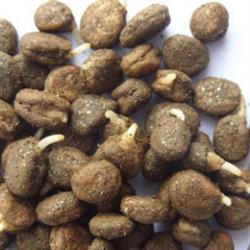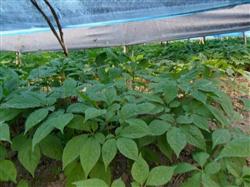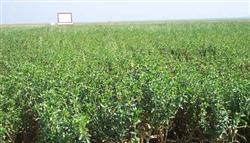How to deal with planting ginseng seeds on flat land?

How to deal with planting ginseng seeds on flat land? Please introduce the method before planting ginseng can refer to the above methods: after drying the white skin in water and drying it in the sun at a temperature of about 25 ℃ for 30 minutes, the bacteria in the seed epidermis can be killed by ultraviolet light. Mix weathered sand (river sand, but with high bacterial content) and ginseng seeds at the ratio of 5 ∶ 1, and keep moisture between 15% and 18%, that is, if you have a ball in your hand, let go and disperse. Put the mixed and moderately hydrated ginseng seeds into a jar or wooden box, or dig holes in the ground where there is no stagnant water, wrap them with gauze, and store them in a rain-proof awning. Before the seed crack, the temperature is controlled at 18 ℃ ~ 20 ℃, and after the crack rate is 80%, the temperature of the seed storage container is reduced to 13 ℃ ~ 15 ℃. The temperature is too high and the moisture is too much, and the seed is easy to rot. Ginseng seeds stored in sand should be turned over every 10 to 15 days to ensure that the moisture in the container is consistent. Warm water spray replenishes when there is little moisture, and air drying in time when there is too much moisture. Click to get more ginseng planting technology click to get more medicinal material planting technology
- Prev

What is ginseng white leaf withered?
What is ginseng white leaf withered? Please introduce the symptoms of white leaf blight of Panax ginseng: it is more common in one year and two years of general ginseng. Ginseng leaves fade from leaf tip or edge, water immersion spreads to leaf stem, leaves after chlorosis are white or light yellow, some leaves are like white paper after chlorosis, and it is not easy to break by hand.
- Next

Where is the appropriate place to plant scutellaria baicalensis?
Where is the appropriate place to plant scutellaria baicalensis? Please give an introduction to scutellaria like mild climate, cold resistance, drought resistance, afraid of water. The wilderness is born on the hillside, weirs, forest margins sunny dry places. The requirements for land are not strict and the adaptability is very strong. With drainage good, fertile sandy loam is excellent, but in the mountainous hills thin land can also be...
Related
- Fuxing push coffee new agricultural production and marketing class: lack of small-scale processing plants
- Jujube rice field leisure farm deep ploughing Yilan for five years to create a space for organic food and play
- Nongyu Farm-A trial of organic papaya for brave women with advanced technology
- Four points for attention in the prevention and control of diseases and insect pests of edible fungi
- How to add nutrient solution to Edible Fungi
- Is there any good way to control edible fungus mites?
- Open Inoculation Technology of Edible Fungi
- Is there any clever way to use fertilizer for edible fungus in winter?
- What agents are used to kill the pathogens of edible fungi in the mushroom shed?
- Rapid drying of Edible Fungi

